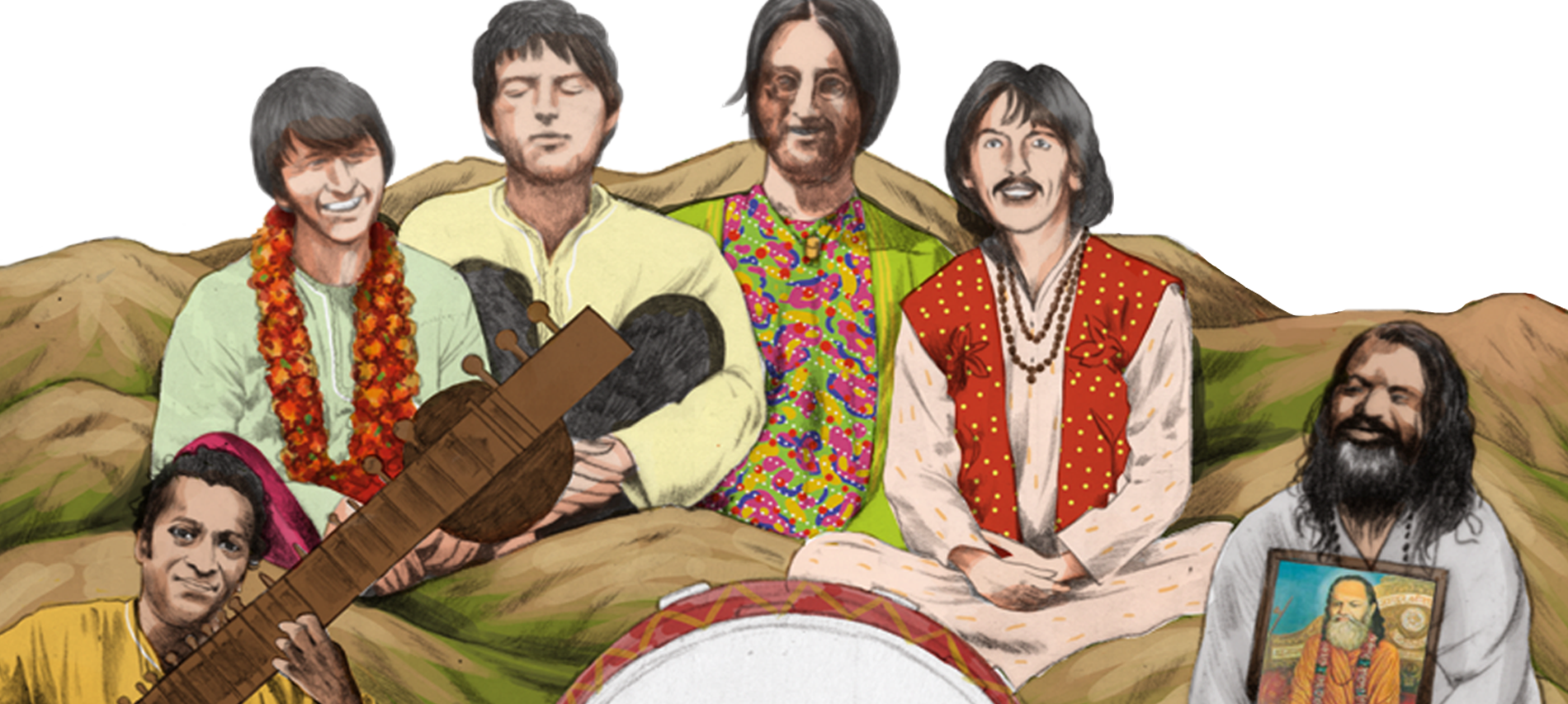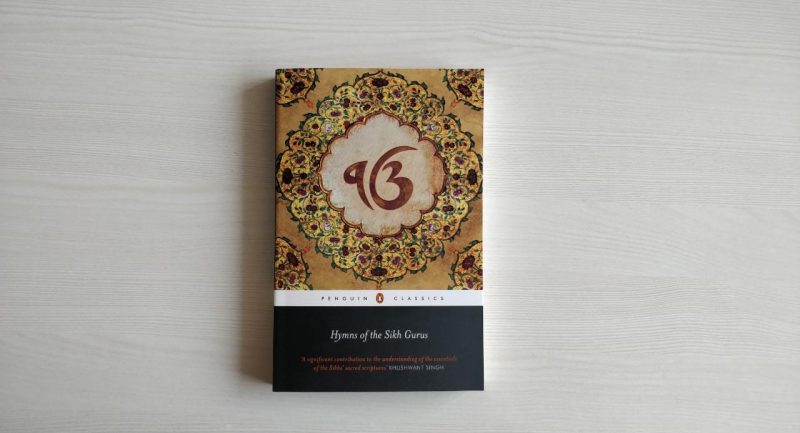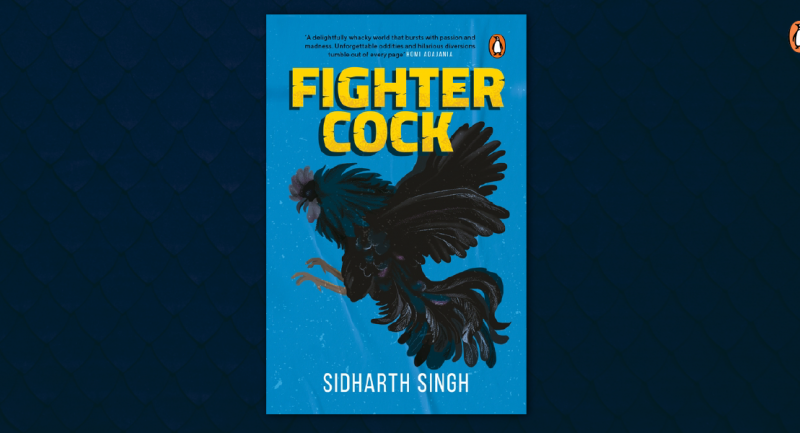
Ajoy Bose has written a widely acclaimed book on the Emergency, For Reasons of State, and Behenji, the definitive political biography of Dalit leader Mayawati. A leading television commentator and columnist, he now uses his formidable investigative skills to look beyond politics, recreating the fascinating journey of the Beatles to India half a century ago. Full of characters and happenings delightful and evil, of comic excess and dark whimsy, Across the Universe: The Beatles in India, traces the path the Beatles took to India and the dramatic denouement of their sojourn at the Himalayan ashram.
Here’s an excerpt from this fascinating read.
—————————
Based on a raga recorded by Ravi Shankar some years ago on All India Radio, George’s song seemed quite independent of the rest of the album in its entirely Indian orientation played by Indian musicians with the rest of the Beatles out of the picture. The Indian musicians were recruited from the Asian Music Circle in Finchley, north London. They were Anna Joshi and Amrit Gajjar on dilruba, Buddhadev Kansara on tanpura and tabla player Natwar Soni. The song also featured lyrics that were overtly spiritual, seeking to explain the Hindu concept of maya, a veil of illusion that needed to be cast aside to find spiritual truth and happiness ‘within you’. The passion with which George played the sitar and the distinctive quality of the song impressed both Paul and John who were getting quite annoyed with his lack of enthusiasm towards the album. Both thought the song was great and did not appear to mind George having Indian musicians take over their studios and, for the first time, leaving them out of a Beatle song. Describing the song as ‘a great Indian one’ John said, ‘We came along one night and we had about four hundred Indian fellows playing here and it was a great evening, as they say.’ He would say later, ‘One of George’s best songs. One of my favourites of his, too. He’s clear on that song. His mind and his music are clear. George is responsible for Indian music getting over here.’ No longer the quiet Beatle, George, his imagination fired by Indian spirituality, could not stop talking about his new infatuation. He appeared along with John on the prestigious television show The Frost Report and gave innumerable interviews to a variety of publications declaring his adopted faith. When he was asked to give his choice of iconic personalities that the Beatles had decided to put on the Sgt. Pepper’s Lonely Hearts Club Band album cover, the four he chose were all Hindu seers, starting with his favourite Sri Paramahansa Yogananda and the three gurus who preceded him, Sri Yukteswar Giri, Sri Mahavatar Babaji and Sri Lahiri Mahasaya. On George’s insistence, these unfamiliar holy men from a distant land and an obscure faith brushed shoulders on the Sgt. Pepper’s cover with a variety of popular Western icons including Marilyn Monroe, Edgar Allan Poe, Karl Marx, Carl Jung and the champion swimmer Johnny Weissmuller who played Tarzan in Hollywood movies, among numerous others. In less than a year of meeting Ravi Shankar, George had virtually erased from his life all traces of his English working-class roots in Liverpool. The Harrisons became vegetarians, inspired by ahimsa, the Hindu pledge of non-violence to all living things. Pattie would shop at the local health food store in Esher for grains, pulses, vegetables and fruit, cooking not just nut cutlets and stews but also pakora, samosa, lassi and rasa malai. The scent of hash and joss sticks permeated the house. An ornate hookah sat on a low table in a sitting room which had no chairs, just cushions and rugs, according to George’s biographer Thomson. Thomson paints a compelling portrait of a Beatle who had by now fully embraced the culture and creed of a distant land. At his twenty fourth birthday party at his Kinfauns home, he played the sitar and then watched and recorded a concert performed in his honour by the great sarod player Ali Akbar Khan. No other Beatle attended. George wore a traditional cotton kurta and his guests included photographer Henry Grossman and the Byrds’ David Crosby and McGuinn, each arriving with vegetarian dishes for the buffet-style meal. It was, according to McGuinn, a charged occasion. ‘I remember being at that party with him in 1967 and I could feel the room change, there was something happening in the room. I looked at George and asked what was going on, and he said, “I’m transcending.”’ In 1966, a Vaishnavite Indian seer, Swami Bhaktivedanta Prabhupada, had founded a Krishna cult called ISKCON that would sweep the West captivating thousands of young men and women with its evocative ‘Hare Krishna’ chant. The swami asserted that by merely chanting the name of Lord Krishna, devotees could directly connect to the deity. When George came across a record of this chanting, he immediately fell under its spell. He played it to John who too was mesmerised by the repeated and almost hypnotic intonation of ‘Hare Krishna, Hare Rama’, a mantra that is routinely chanted every day by millions of devotees in India belonging to the Krishna sect of Hinduism. For the two Beatles, however, the ‘Hare Krishna’ chant seemed like a magical stairway to divinity. It was also another step towards the quest of the mantra that would take them to Rishikesh. George and John started chanting together whenever they met, forging a second bond in addition to their earlier connection over their shared first encounter with LSD.
For instance, both acid and mantra came together for the two during a sojourn out in the picturesque Aegean Sea in the month of July, when the Beatles went on a bizarre and ultimately abortive hunt to buy a Greek island to build their own kingdom. ‘Somebody had said we should invest some money, so we thought: “Well, let’s buy an island. We’ll just go there and drop out.” It was a great trip. John and I were on acid all the time, sitting on the front of the ship playing ukuleles. Greece was on the left; a big island on the right. The sun was shining and we sang “Hare Krishna” for hours and hours,’ George would fondly reminisce many years later. In that same month George waxed eloquent about both spirituality and India in an interview with Fifth Estate, a radical underground periodical. It would be his most explicit confession of embracing the Hindu faith and Indian culture and is worth quoting in detail. Answering a question on public curiosity about his new zeal for the chant, George expounded on the Hindu theory of Karma:
‘They get hung up on the meaning of the word rather than the sound of the word. “In the beginning was the word” and that’s the thing about Krishna, saying Krishna, Krishna, Krishna, Krishna, so it’s not the word that you’re saying, it’s the sound Krishna Krishna Krishna Krishna Krishna Krishna and it’s just sounds and it’s great. Sounds are vibrations and the more you can put into that vibration, the more you can get out, action and reaction, that’s the thing to tell the people.’










